warspite1
Posts: 41353
Joined: 2/2/2008
From: England
Status: offline

|
Mike Dubost has been assisting with the US submarine write-ups (much thanks Mike). Please see two examples. The first is the slightly revised Nautilus (taking into account Midway) and the second is the USS Tench. Two more examples to follow in due course for the usual comment.
[4261 Submarine - by Mike Dubost]
.P These World In Flames counters represent a number of submarines rather than
any specific individual submarine. The dates printed on the back of the counters
do not relate in any meaningful way with build dates for the various classes of
United States Navy (USN) submarine class and therefore the counter date in most
cases should be ignored. These US submarine write-ups contain the usual technical
data, followed by a brief history of one or more submarines from each of the main
classes that saw action during the Second World War.
.P When the Japanese attacked Pearl Harbor, the USN had a total of one hundred
and eleven large and medium submarines, of which fifty-five large and eighteen of
the medium type were assigned to the Pacific and Asiatic Fleets. There were a
further seventy-seven under construction. The average large fleet submarine had a
displacement of around fifteen hundred tons, while the smaller S-boats had
displacements of approximately one thousand tons, and the largest fleet submarine
displaced around two thousand seven hundred tons.
.P At the time of the outbreak of war in Europe, the US was a signatory to the
London Naval Treaty of 1930, which prohibited unrestricted submarine warfare
(Article 22 required attackers to first place passengers, crew, and ship’s papers
in “a place of safety”). USN sub doctrine therefore emphasized attacks on capital
ships, especially battlecruiser types and larger. On the 7th December, the day of
the attack on Pearl Harbor, the USN concluded that the survival of the US was at
risk in the war, and consequently ordered the use of unrestricted air and
submarine warfare. According to Samuel Eliot Morison, combat vessels were still
considered prime targets, but attacks on merchant ships were of major importance.
.P Unlike German U-boats which operated in so-called wolf-packs for greater
effectiveness, US submarines typically operated alone, due in part to the large
distances which had to be covered from their few bases. US submarines would
usually attack while submerged, using periscope observations to gather the data
to input into the mechanical targeting computer.
.P Initially, US torpedoes were defective. However, once the torpedo faults were
corrected, US submarines became very effective attackers. Nearly one third of
Japanese combat vessels lost were due to the submarine service, as well as nearly
two thirds of Japanese merchant losses.
.P
.P This write-up looks at the two-ship Narwhal-class. This class provided two of
the eight submarines that, together, were known as the V-class. The "V-class"
contained four individual classes of submarine that were completed between 1924
and 1934. They were designed to perform a variety of roles in the vast Pacific
Ocean areas.
.P The Narwhals were large, cruiser submarines. They would prove to be the
largest submarines built by the USN until the construction of the first nuclear
submarines. They were fitted with six torpedo tubes and a pair of six-inch deck
guns. The larger size needed for a second deck gun meant that this class was
easier to detect and with clumsier handling, although they were faster on the
surface than the older S-boats.
.P Four additional torpedo tubes were fitted in the early forties and they also
received a change in propulsion unit, moving to a diesel-electric unit to try and
cure the poor reliability problems suffered pre-war.
.P This write-up specifically looks at the USS Nautilus.
.P
.B Name: USS Nautilus
.B Engine(s) output: 5,633 hp (Surfaced) 1,600 hp (Submerged)
.B Top Speed: 17.44 knots (Surfaced), 8 knots (Submerged)
.B Main armament: 6 x 21-inch torpedo tubes and 2 x 6-inch (152mm) gun
.B Displacement (Fully Submerged): 3,960 tons
.B Diving Depth: 300 ft
.P USS Nautilus was launched in March 1930 at Mare Island Naval Shipyard in
San Francisco Bay and completed four months later. She completed a total of
fourteen war patrols, stretching from Midway to the Solomon Islands to the Kurile
Islands.
.P On her first war patrol in June 1942, Nautilus participated in the battle of
Midway, during which she was commanded by Lt-Cdr Brockman. She located the
carriers of Vice-Admiral Nagumo`s Kido Butai early on the 4th June and sought to
attack the enemy. Although she never got close enough to make an attack on a
carrier during the morning, she did manage to fire off a torpedo at Nagara, one
of the escorting cruisers. This had the effect of bringing a destroyer, Arashi,
on the scene, and from around 0900hrs until just before 1000hrs, Arashi and
Nautilus fought a game of cat and mouse as the destroyer tried to sink the
American submarine with depth charges. Although Arashi was unsuccessful in this
task, she did at least manage to keep Nautilus from engaging the carriers.
.P Having survived the attack, Nautilus was indirectly to make a significant
impact on the course of the battle. Having failed to sink Nautilus, Arashi`s
captain sought to return to Nagumo`s fleet, now some distance away. As she closed
on Nagumo`s fleet she was spotted and tracked by USS Enterprise`s dive-bomber
group, led by Lt-Cdr McClusky. Unknowingly, Arashi led McClusky straight to the
carriers she was trying to protect - with dire consequences for the Kido Butai
(see USS Yorktown for the story of the battle).
.P After three of Kido Butai`s carriers had been mortally damaged by dive-bombers
from Yorktown and Enterprise, they remained afloat for many hours while fire took
control and ultimately destroyed each vessel. In the early afternoon, Brockman
came across the stationary Kaga. Nautilus finally had the opportunity to sink a
Japanese carrier. Unfortunately, the one torpedo that hit, failed to explode and
instead of sinking Kaga, suddenly Nautilus was assaulted from all angles by the
carrier`s escorts. Once again Nautilus found herself in a life and death struggle
and once again she survived her ordeal; escaping with light damage from nearby
depth charge explosions.
.P Towards the end of her first patrol, Nautilus achieved further success while
patrolling off the Japanese coast. On the 25th June she found the destroyer
Yamakaze, while the latter was sailing alone and returning to the Inland Sea.
Nautilus managed to torpedo and sink the destroyer.
.P Her second war patrol was the raid on Makin in August 1942 (see USS Argonaut).
Following this, she undertook three further patrols between September 1942 and
April 1943 that netted seven merchant ships sunk. In the last of these three
patrols she took carried troops for landings on Attu.
.P Her sixth war patrol began in September 1943 and was a photo-reconnaissance
mission to the Gilbert Islands prior to the invasion of Tarawa. For her seventh
war patrol, she was sent back to gather last-minute surf and weather readings.
During this mission, she was struck by friendly fire from the destroyer Ringgold.
Despite significant damage to the conning tower, she was repaired and
successfully completed the mission.
.P Subsequent patrols saw her in the southwest Pacific, operating off the
Philippines. During her thirteenth war patrol, she was called upon to destroy the
US submarine Darter, which had run aground on a reef and could not be recovered.
Efforts to keep the submarine out of enemy hands by destroying her with torpedoes
failed due to the shallow water around the reef, so the 6-inch deck guns of the
Nautilus were used to accomplish the task.
.P After completing her fourteenth war patrol, Nautilus was sent back to the US
to be decommissioned.
.P USS Nautilus was scrapped in November 1945.
[4262 Submarine - by Mike Dubost]
.P These World In Flames counters represent a number of submarines rather than
any specific individual submarine. The dates printed on the back of the counters
do not relate in any meaningful way with build dates for the various classes of
United States Navy (USN) submarine class and therefore the counter date in most
cases should be ignored. These US submarine write-ups contain the usual technical
data, followed by a brief history of one or more submarines from each of the main
classes that saw action during the Second World War.
.P When the Japanese attacked Pearl Harbor, the USN had a total of one hundred
and eleven large and medium submarines, of which fifty-five large and eighteen of
the medium type were assigned to the Pacific and Asiatic Fleets. There were a
further seventy-seven under construction. The average large fleet submarine had a
displacement of around fifteen hundred tons, while the smaller S-boats had
displacements of approximately one thousand tons, and the largest fleet submarine
displaced around two thousand seven hundred tons.
.P At the time of the outbreak of war in Europe, the US was a signatory to the
London Naval Treaty of 1930, which prohibited unrestricted submarine warfare
(Article 22 required attackers to first place passengers, crew, and ship’s papers
in “a place of safety”). USN sub doctrine therefore emphasized attacks on capital
ships, especially battlecruiser types and larger. On the 7th December, the day of
the attack on Pearl Harbor, the USN concluded that the survival of the US was at
risk in the war, and consequently ordered the use of unrestricted air and
submarine warfare. According to Samuel Eliot Morison, combat vessels were still
considered prime targets, but attacks on merchant ships were of major importance.
.P Unlike German U-boats which operated in so-called wolf-packs for greater
effectiveness, US submarines typically operated alone, due in part to the large
distances which had to be covered from their few bases. US submarines would
usually attack while submerged, using periscope observations to gather the data
to input into the mechanical targeting computer.
.P Initially, US torpedoes were defective. However, once the torpedo faults were
corrected, US submarines became very effective attackers. Nearly one third of
Japanese combat vessels lost were due to the submarine service, as well as nearly
two thirds of Japanese merchant losses.
.P
.P This write-up looks at the Tench-class. This class consisted of a series of
Fleet Submarines designed by the USN during the Second World War. They were an
improvement of the preceeding Gato-class. They were slightly larger than the
Gatos with an improved internal layout. The Tench-class was also built more
strongly to allow deeper dives, adding an extra 100 feet to the test depth in
comparison to the Gatos.
.P Initial plans called for a total of one hundred and forty-six boats to be
built, but the majority were cancelled in the final year of the war. A total of
thirty-one were commissioned between 1944 and 1951.
.P This write-up looks specifically at USS Tench.
.P
.B Name: USS Tench
.B Engine(s) output: 5,400 hp (Surfaced) 2,740 hp (Submerged)
.B Top Speed: 20.25 knots (Surfaced), 8.75 knots (Submerged)
.B Main armament: 10 x 21-inch torpedo tubes and 1 x 5-inch (127 mm) gun
.B Displacement (Fully Submerged): 2,440 tons
.B Diving Depth: 400 ft
.P The name ship of the Tench-class was launched in July 1944 at the Portsmouth
Navy Yard in New Hampshire, and completed in October 1944. The submarine’s
sponsor was Lady Bird Johnson, whose husband Lyndon Johnson, was to become
President in the 1960`s.
.P After a brief training period Tench began her first war patrol from Pearl
Harbor on 7th of February 1945. After refueling at Saipan, she joined three other
submarines to form a wolf pack. The wolf pack rotated duties in anti-shipping,
weather-reporting, photo-reconnaissance, and air-sea rescue. During her first
stint on rescue duties, she responded to a report of a dye marker seen near Akune
in Kyushu. Entering the shallow bay, she found the reported dye marker was just a
reflection from a shoal area, and was exiting the bay on the surface, in water
too shallow to dive. A sighting by enemy aircraft gave her crew a scare, but they
turned out to be from a US carrier aircraft returning from an attack on Nagasaki.
.P On 3rd of April, Tench was spotted by a Japanese aircraft and forced to spend
the majority of the day submerged. On this patrol, Tench was ordered to serve as
a part of the submarine picket force watching for a possible sortie by the IJN
heavy surface forces in response to the invasion of Okinawa. Tench was positioned
on the west coast of Japan and so failed to intercept the battleship Yamato and
her small task force as it sailed through the eastern exit of the Inland Sea.
After the USS Threadfin sighted Yamato, and the picket line was dispersed, Tench
sailed for Guam.
.P On her second war patrol, Tench patrolled Japanese shipping lanes between the
Kurile Islands. Her first contact with Japanese shipping on this patrol was the
sighting of a periscope, and Tench evaded the enemy submarine. In several
successful attacks, Tench sank a number of freighters and tankers, while dodging
enemy anti-submarine forces. During this time, Tench’s closest call was with one
of her own torpedoes that circled back towards the submarine. Tench was unable to
evade the torpedo, but it ran deep enough to pass under her stern. On the 16th
June, she set course for Midway, so ending her second patrol.
.P Her third and final war patrol took Tench to the East China Sea. During this
patrol, Tench only attacked ships too small to be credited as kills. She did take
the Korean crew of a lugger as prisoners, but shortly released them in a small
boat off the Korean coast. After releasing the prisoners, Tench conducted shore
bombardment against Osei To, a small island off the western coast of Korea. Her
final action occurred on the 9th August when two Japanese planes dropped bombs
near her, but without causing her damage.
.P Tench remained on patrol station until the 28th August and then returned to
New London, Connecticut.
.P USS Tench was scrapped in 1973.
< Message edited by warspite1 -- 3/5/2010 9:07:06 AM >
_____________________________
England expects that every man will do his duty. Horatio Nelson October 1805  |
 Printable Version
Printable Version






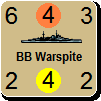
 . The fact that unusually, it was written from the Japanese perspective, was a most welcome change and it was really interesting to read the operational aspects and what getting a strike launched involved. Yet it is all done in an easy to read style - SUPERB!
. The fact that unusually, it was written from the Japanese perspective, was a most welcome change and it was really interesting to read the operational aspects and what getting a strike launched involved. Yet it is all done in an easy to read style - SUPERB!

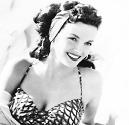
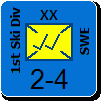

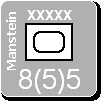
 .
. 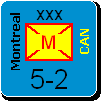
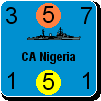
 New Messages
New Messages No New Messages
No New Messages Hot Topic w/ New Messages
Hot Topic w/ New Messages Hot Topic w/o New Messages
Hot Topic w/o New Messages Locked w/ New Messages
Locked w/ New Messages Locked w/o New Messages
Locked w/o New Messages Post New Thread
Post New Thread